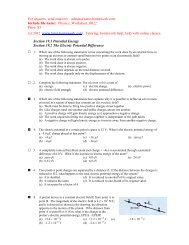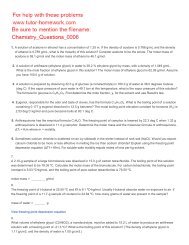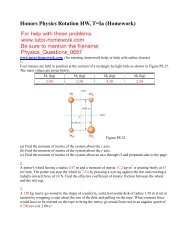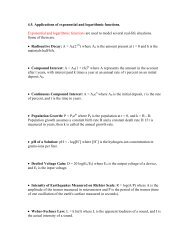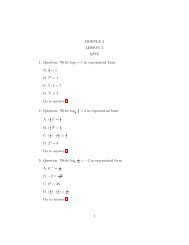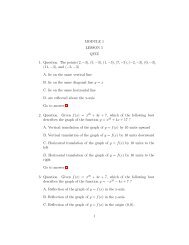Chapter 11: Energy in Thermal Processes - Tutor-Homework.com
Chapter 11: Energy in Thermal Processes - Tutor-Homework.com
Chapter 11: Energy in Thermal Processes - Tutor-Homework.com
Create successful ePaper yourself
Turn your PDF publications into a flip-book with our unique Google optimized e-Paper software.
7.How much energy is required to change a 40 g ice cube from ice at -30°C tosteam at 140°C?J8.What mass of steam that is <strong>in</strong>itially at 130°C is needed to warm 290 g of waterand its 300 g alum<strong>in</strong>um conta<strong>in</strong>er from 20°C to 50°C?g9.A rest<strong>in</strong>g adult of average size converts chemical energy <strong>in</strong> food <strong>in</strong>to <strong>in</strong>ternalenergy at the rate of 120 W, called her basal metabolic rate. To stay at aconstant temperature, energy must be transferred out of the body at the samerate. Several processes exhaust energy from your body. Usually the mostimportant is thermal conduction <strong>in</strong>to the air <strong>in</strong> contact with your exposed sk<strong>in</strong>. Ifyou are not wear<strong>in</strong>g a hat, a convection current of warm air rises vertically fromyour head like a plume from a smokestack. Your body also loses energy byelectromagnetic radiation, by your exhal<strong>in</strong>g warm air, and by the evaporation ofperspiration. Now consider still another pathway for energy loss: moisture <strong>in</strong>exhaled breath. Suppose you breathe out 22.0 breaths per m<strong>in</strong>ute, each with avolume of 0.600 L. Suppose also that you <strong>in</strong>hale dry air and exhale air at 37°Cconta<strong>in</strong><strong>in</strong>g water vapor with a vapor pressure of 4.00 kPa. The vapor <strong>com</strong>es fromthe evaporation of liquid water <strong>in</strong> your body. Model the water vapor as an idealgas. Assume its latent heat of evaporation at 37°C is the same as its heat ofvaporization at 100°C. Calculate the rate at which you lose energy by exhal<strong>in</strong>ghumid air.W10.A 78 kg cross-country skier glides over snow as <strong>in</strong> Figure P<strong>11</strong>.25. The coefficientof friction between skis and snow is 0.30. Assume all the snow beneath his skisis at 0°C and that all the <strong>in</strong>ternal energy generated by friction is added to snow,which sticks to his skis until melted. How far would he have to ski to melt 2.0 kgof snow?m<strong>11</strong>.Figure P<strong>11</strong>.25



